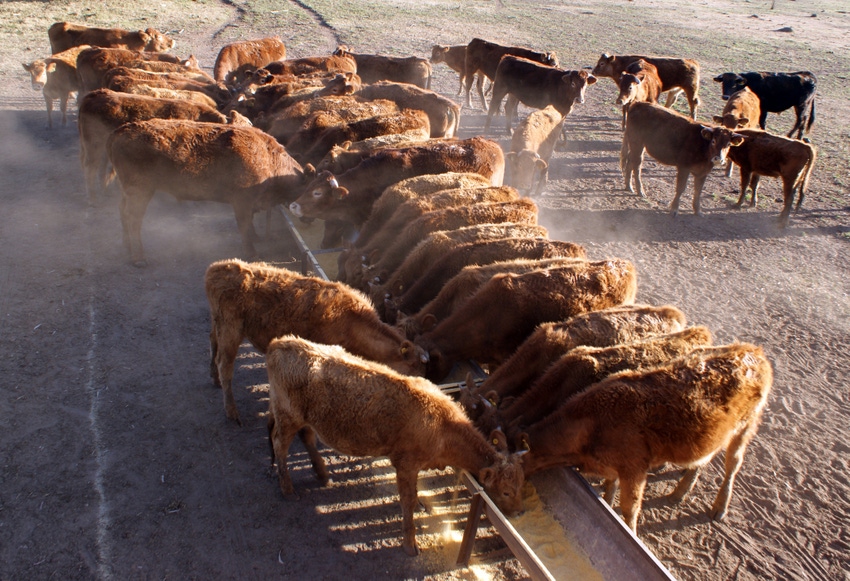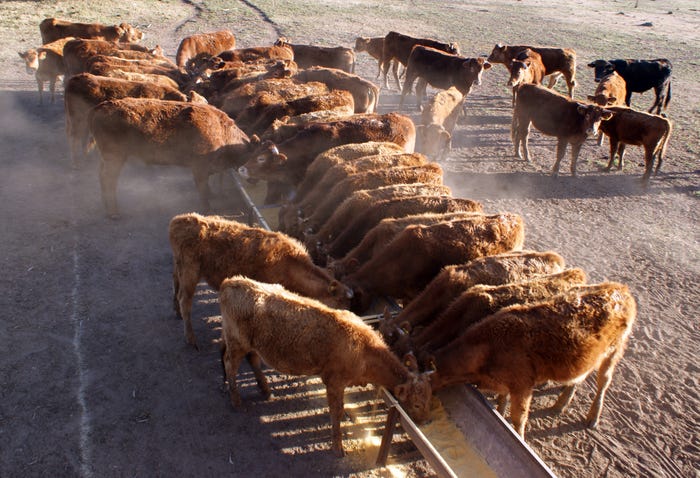Wild ride in feeder cattle markets
Insight into current developments and their implications for stakeholders in the feeder cattle market.
July 3, 2024

A few years ago, some cattle producers and industry analysts raised concerns that the feeder cattle futures contract was in need of major changes and suggested even more drastic measures of delisting the contract. Much of the discussion centered around claims of unjustified variation in feeder cattle futures prices and associated basis (local cash minus nearby futures prices) volatility. Undue basis variability makes hedging in feeder cattle futures a challenge. In 2022 we published an article analyzing feeder cattle basis risk and associated determinants. The article concluded indeed during 2015 feeder cattle basis variation increased substantially as feeder cattle prices were in rapid decline following the dramatic beef cow herd expansion that was underway. Once the feeder cattle market stabilized by 2018, basis variation declined back down to levels similar to 2010-13 levels – a comforting conclusion. However, today we are on another wild ride in feeder cattle with basis variation similar to what was experienced 10 years ago but with the opposite price trend. This article summarizes what is happening and highlights what it means for market participants.
Nearby feeder cattle futures prices have doubled recently going from $130/cwt in May 2021 to more than $260/cwt in June 2024 (Figure 1). The average weekly price change was $2.70/cwt in absolute value (includes price changes due to rolling across contract months as a contract expires). In contrast, in 2015, nearby feeder cattle futures declined from $225/cwt at the start of the year to $160/cwt by year end with an absolute value of weekly price changes averaging almost $4/cwt. Since 2023, the typical weekly price move in nearby feeder futures has been close to that at $3.44/cwt up or down.

A major role of futures markets, in addition to risk transfer, is price discovery. Generally, futures markets are central to price discovery. However, research I conducted in cattle markets demonstrated that when local cattle supply conditions are rapidly changing information is often discovered first in cash markets and then transferred to futures. That is, cash markets tend to lead price discovery in these situations. But a very important aspect of local cash feeder cattle markets is because individual transactions comprised of live animals of diverse qualities are represented and bidder activity across market locations varies, price dispersion across individual transactions and auction market locations can be quite high. This means, when cattle supplies are rapidly changing and being reflected in already volatile cash transaction prices, price variation across transactions is even larger. So, both buyer and seller beware as winners and losers on both sides are more common when cash markets are leading price discovery.
Furthermore, when cash markets are rapidly changing, futures markets, because of price limits set by CME, can constrain futures prices from keeping up with cash market price changes. As such, the CME increases daily price limits on futures contracts when price variation is high. For example, in 2021 daily feeder cattle futures price limits were $6.25/cwt; they increased to $7/cwt in mid-2022; $8.25/cwt in 2023; and limits just increased to $9.25/cwt in July 2024 mirroring, with a lag, cash market price variation.
What does all this mean for market participants? It means basis risk increases when we are having a wild ride with feeder cattle markets. To illustrate, Figure 2 shows weekly nearby feeder cattle basis for 7-800 lb steers from 2015-June 2024 for five state market reports complied by USDA AMS. I selected four major cow/calf and/or feedlot states that are all part of the feeder cattle index that feeder futures settles to at expiration (NE, KS, MO, and TX) and one important cow/calf state that is not included in the index (KY). The chart has a lot of noise, but we can draw some definitive patterns.

First, basis variability across location can be stark, especially when the variation we discussed above is present in local cash market transactions. For example, during the third week of June 2024, NE basis was $29.80/cwt, meaning NE cash feeders were $29.80/cwt greater than the nearby feeder futures contract. At the other extreme of the selected markets, TX basis was -$11.66/cwt. Indicating a more than $40/cwt range between NE and TX basis that week! This is not cherry picking, as through June 2024 the weekly basis range across these five markets during this year has averaged $32.64/cwt. While NE often had the strongest basis, KY typically had the weakest. One more point here, these are the for the combined markets for these states as reported by AMS, even greater variation would be present if we examined individual auction barn sales reports.
Second, basis variability is back up again, even above levels experienced 10 years ago during the rapid decline in feeder prices. To explore this in a bit more depth Figure 3 shows the standard deviation in basis by year for the five markets. Though I don’t generally like charts like Figure 3 with multi-colored bars because I find them confusing, this chart can be quickly summarized. What is easy to see is basis risk, measured by standard deviation of weekly basis, has been notably higher in 2023-24 than what has been experienced during any time over the last ten years in all five markets. Also, for some years variation in basis is similar across locations, such as in 2017 where standard deviations of weekly nearby basis was around $3-$4/cwt across the five market regions. However, in some years the amount of basis variability present across locations differs widely. For example, in 2023 basis standard deviation ranged from $6/cwt in MO to more than $9/cwt in NE and 2024 is shaping up similarly.

The take-home message is as this wild feeder cattle market ride we’ve been on for the past year-and-a-half will probably continue for a while. This means, local cash prices for feeder cattle are going to vary not only week-to-week, but also across transactions in ways that are economically important. There will be more winners and more losers on both sides of these markets as price discovery is always done with limited information and cash feeder cattle markets assume a larger role in price discovery in this environment while the futures market tries to keep up. Larger futures price daily limits mean futures can keep up better when cash markets are moving rapidly than they could before, but it also means the buffer to slow down futures price changes is now wider. One cattle feeder told me he keeps sticky notes on his computer screen to remind him of the latest changes to feeder and fed cattle futures contract price limits. Knowing those limits are important for anyone placing or lifting hedges during a day when markets are on the move. You don’t want to get locked out of being able to place or lift a hedge in these types of market environments. Hedging is riskier simply because of increased basis risk and timing of hedge placement and closure matter more. However, when markets are moving rapidly is also when hedging is most valuable and needed most to reduce price risk. So, the value of feeder cattle futures markets for price risk management are higher even with elevated basis risk. There is not a lot one can do as a short hedger in feeder cattle markets when basis moves against you since making delivery against the cash settled futures position is not an option. Transporting cattle from or to favorable basis locations is possibly and option, but given the variation present in basis at any given location across weeks, it is not something I would necessarily advise as the risk is high. Feeder cattle buyers however, can be more selective in buying cattle from places with weaker basis as they have more options in cattle procurement across sex, weight, and location. For them, the search for the best deals can be time well spent.
About the Author(s)
You May Also Like




.png?width=700&auto=webp&quality=80&disable=upscale)
